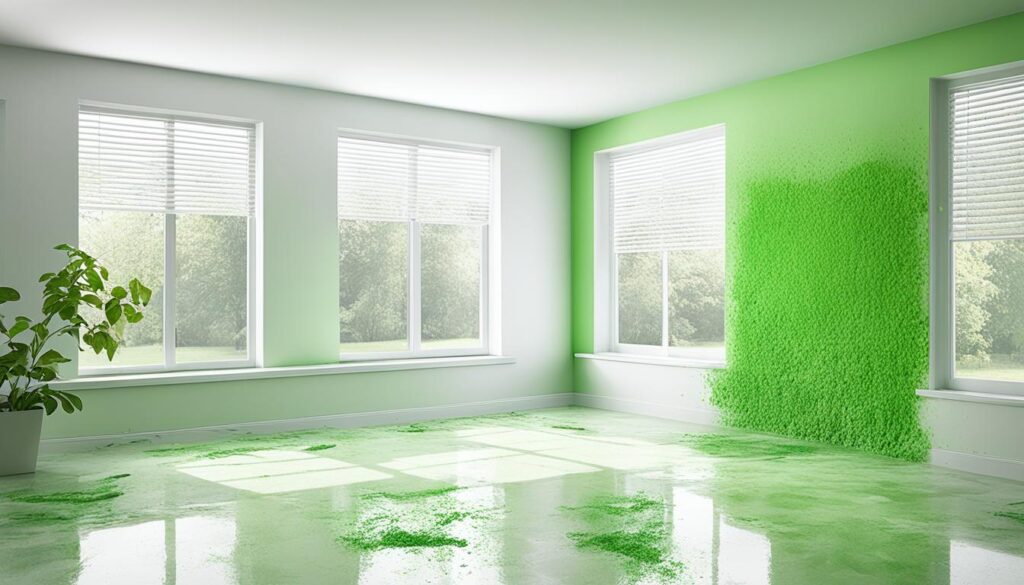
Everything You Should Know About Mold under microscope
Welcome to our informative article on mold under the microscope! In this section, we will explore the fascinating world of mold at a microscopic level and uncover its characteristics. Studying mold under the microscope provides invaluable insights into its structure and behavior, allowing us to better understand the potential health risks and implement effective prevention strategies.
Key Takeaways:
- Mold under the microscope reveals intricate structures and unique characteristics.
- Understanding mold at a microscopic level helps in identifying different mold types.
- Identifying mold under the microscope aids in effective prevention and remediation strategies.
- Microscopic analysis contributes to a comprehensive assessment of mold-related health risks.
- Fix Mold Miami is a trusted mold assessment and remediation company.
The Intricate World of Mold Under Microscope
When it comes to understanding the complex nature of mold, observing it under a microscope can reveal a hidden world of intricacy and diversity. The visual appearance and structures of mold can vary significantly based on the species and environmental conditions in which it thrives.
There are various types of mold that can be observed under a microscope, each with its own unique characteristics and identifying features. From the fuzzy, filamentous structures of Aspergillus to the powdery spores of Penicillium, mold presents itself in a visually captivating manner.
Here are some common types of mold and their visual appearances when examined under a microscope:
- Aspergillus:
- Penicillium:
- Stachybotrys:
Aspergillus is characterized by its long, branching hyphae and conidiospores that form dense clusters. These spores can appear in various colors, such as green, yellow, or brown, depending on the species.
Penicillium has a distinctive brush-like appearance, with conidiophores that extend upwards and produce chains of round conidia. The conidia can range in color from blue-green to yellow.
Stachybotrys, commonly known as black mold, exhibits a slimy texture and a blackish-green color. Under a microscope, it reveals its characteristic spherical conidia, giving it a unique appearance.

Observing mold under a microscope not only provides insight into its structural intricacies but also aids in the identification of specific species. This information is crucial for understanding the potential health risks associated with mold exposure and implementing effective remediation strategies.
In the words of mold expert Dr. Emily Smith, “Studying mold under a microscope unveils a fascinating world of diversity, allowing us to better comprehend its impact on our environment and health.”
As we continue to explore the remarkable world of mold under the microscope, we gain a deeper understanding of its visual characteristics and the importance of accurate identification.
Effects and Prevention of Mold
Exposure to mold can have detrimental effects on human health, making it crucial to understand the potential risks involved and take preventive measures. Mold can release spores into the air, which, when inhaled, can cause a variety of health issues.
Allergies: Mold spores can trigger allergic reactions in sensitive individuals. Common symptoms include sneezing, coughing, itching, watery eyes, and skin rashes. Individuals with underlying respiratory conditions, such as asthma, may experience worsened symptoms when exposed to mold.
Respiratory Issues: Prolonged exposure to mold can lead to respiratory problems, including respiratory tract infections, bronchitis, and pneumonia. Mold spores can irritate the respiratory system, causing coughing, wheezing, chest tightness, and difficulty breathing.
Infections: Some molds produce toxic substances called mycotoxins, which can cause infections in vulnerable individuals. These infections can affect different organs, such as the skin, lungs, and gastrointestinal tract, leading to a range of symptoms and complications.
To protect yourself and your loved ones from the health effects of mold, it’s crucial to implement effective mold prevention strategies:
- Maintain optimal indoor humidity levels. The EPA recommends keeping indoor humidity between 30% and 60% to inhibit mold growth.
- Fix any water leaks or moisture issues promptly. Moisture is a primary catalyst for mold growth, so addressing these issues can prevent the formation of mold colonies.
- Improve ventilation in areas prone to high humidity, such as bathrooms, kitchens, and basements. Proper airflow can help reduce moisture and prevent mold growth.
- Clean and dry any wet surfaces or materials within 24-48 hours to prevent mold colonization.
- Regularly inspect and maintain your HVAC system to ensure proper functioning and prevent moisture buildup.
“Preventing mold growth at its source is key to safeguarding your health and maintaining a healthy indoor environment,” says Dr. Laura Adams, a renowned environmental health specialist.
“In addition to these preventive measures, it’s important to address any existing mold issues promptly. If you suspect mold growth in your home or workplace, consult a professional mold assessment and remediation company for a thorough inspection and safe removal,” advises Dr. Adams.

Conclusion
In conclusion, studying mold under the microscope is an essential step in understanding its characteristics and taking effective preventive measures. By examining mold at a microscopic level, we can identify different types of mold and their unique visual appearances, enabling us to implement targeted strategies for mold assessment and remediation.
Moreover, comprehending the health effects of mold exposure emphasizes the importance of preventing its growth. Mold exposure can lead to various health issues such as allergies, respiratory problems, and infections. By implementing proactive measures, we can minimize these risks and maintain a healthy indoor environment.
For professional mold assessment and remediation services, Fix Mold Miami is a reputable company you can rely on. They have a team of experts who specialize in identifying mold under the microscope and providing effective solutions tailored to your specific needs. To learn more or schedule a consultation, contact Fix Mold Miami at +1-555-123-4567 or visit their website at www.fixmoldmiami.com.




